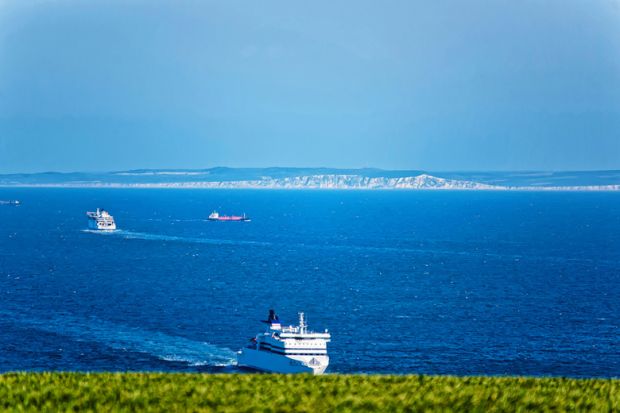The last Brexit occurred with the Reformation in 1535, when England declared itself independent of Europe by breaking with Rome. With another change in the offing, it’s useful to reflect on the maritime border separating the UK from the Continent. According to Napoleon’s propagandist, Jean-Louis Dubroca, “Nature has placed England and France in a geographical location which must necessarily set up an eternal rivalry between them.” This rivalry hinders progress. It also conceals cooperation.
The Communist Manifesto boldly declared the bourgeoisie to have “accomplished wonders far surpassing Egyptian pyramids, Roman aqueducts, and Gothic cathedrals”, an optimistic assessment undermined when plans for a Channel Tunnel at the end of the 19th century were scuppered by invasion fears. Writing in 1913, Lenin asked: “What then is holding the matter up? Britain is afraid of – invasion!...Capitalist barbarism is stronger than civilisation”.
As Renaud Morieux observes, “the mainstream historiographical model of Anglo-French relations, centred on hostility and hatred, revolves around the idea of the Channel as a barrier”. Morieux confronts this pessimistic vision of Anglo-French relations as characterised chiefly by conflict. The Channel can be viewed as a channel of commerce and communication, bridge rather than barrier, depending on political perspective or historical moment. Morieux’s advantage over other historians is that he sees the Channel from both sides, taking issue not only with the British “Island story” but also the equally chauvinist standpoint of French commentators on “La Manche”.
Morieux picks a period when the myth of the Channel as a site of struggle is strongest, then ranges across a much wider history to argue that the negative narrative that held sway since the Norman Conquest – the Channel as offering access to invaders – is only half the story. According to Morieux, “the first geographical use of the English word ‘channel’ to refer to the sea comes in the second part of Shakespeare’s Henry VI”. Another Shakespeare history play, Richard II, captures beautifully the English attitude to a maritime frontier “Which serves it in the office of a wall, Or as a moat defensive to a house”.
That this “sceptred isle” image survives changing historiographical trends is the key to Morieux’s study, which sees the Channel as a zone of contact, not conflict. Even in a century marked by war and suspicion, it functioned as “a visible reminder of a very ancient connection between England and France”. For Morieux, Enlightenment views complicate the tale of competing Empires, with transcultural exchanges as likely as exchanges of artillery: “The idea that the two countries once belonged to the same land mass, separated over time, was part of a broader interrogation which coloured eighteenth-century thought: when, how and why was this world, once integrated, segmented?” Morieux offers a useful corrective to the new British history or “archipelagic studies”, whose challenge to Anglocentric history has a tendency to overlook Europe. It’s a cliché to say a book is timely, but in the midst of another debate on borders this book presents a bigger picture.
Willy Maley is professor of Renaissance studies, University of Glasgow.
The Channel: England, France and the Construction of a Maritime Border in the Eighteenth Century
By Renaud Morieux
Cambridge University Press, 418pp, £74.99
ISBN 9781107039490
Published 31 March 2016
POSTSCRIPT:
Print headline: Is it a barrier? Is it a bridge?
Register to continue
Why register?
- Registration is free and only takes a moment
- Once registered, you can read 3 articles a month
- Sign up for our newsletter
Subscribe
Or subscribe for unlimited access to:
- Unlimited access to news, views, insights & reviews
- Digital editions
- Digital access to THE’s university and college rankings analysis
Already registered or a current subscriber?






